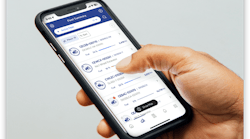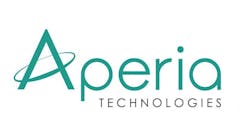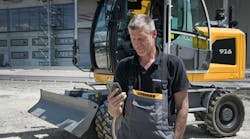Not that long ago, the word “telematics” might just as well have been a new model of a Smith & Wesson rapid fire pistol as far as some fleet managers were concerned.
Those who were familiar with the word most likely heard it from an OEM introducing a new product or a dealer trying to sell one. Even then end users didn’t understand how the technology could benefit their individual company. On top of that was the upscale price tag of the investment. Funding a then-little-understood technology kicked the anxiety level up a notch.
The Ideal Point Person
The absolutely perfect telematics point person would have these qualifications:
- Driven to succeed
- Organized
- Results-oriented
- Customer-oriented
- Have a thorough understanding of fleet-management systems and processes
- Knowledge of heavy equipment
- Knowledge of telematics system and its capabilities
- Knowledge of field operations
- Ability to communicate with all levels of management and operations
But as the idea gained traction in the industry—you might say it rang the Equipment Triangle chimes—it hit a note with equipment manufacturers, dealers, fleet professionals and third-party providers who were quick to spot a new market.
As the momentum of experience increased, some fleets, but not all, did find a certain comfort level. They began to see the enormous potential that telematics had to offer.
Asset managers also saw something else. To control and manage the data produced by telematics meant that a new position had to be created within the traditional equipment division structure: namely, a telematics point person with a balanced skill set of technical knowledge, equipment knowledge, and fleet management know-how. Only then could the chaff be separated from the grain of information that would be useful to each individual organization.
No small job considering such a person would need the technical proficiency to know, first of all, what the data was telling him and, second, how to apply the information from the perspective of fleet management.
“Whether a fleet even needs such a person at all depends on its size,” says Christopher Seelan, president of Toronto-based Genesis Circle, a company that develops equipment- and asset-management applications based on telematics and other information such as fuel data, tire pressure, load systems, and fuel cards, and then integrates the data into the company’s enterprise resource planning (ERP) system. The ERP contains different modules that make up the back-office system of the company, among them: asset, job, employee modules and accounting modules.
To justify a dedicated telematics point person to manage the systems, integrations and applications, Seelan says, the fleet should have 300-plus pieces of equipment.
That doesn’t mean smaller companies can’t benefit from the technology, Seelan says. “Although a dedicated point person could be a little too much for smaller fleet operations, smaller companies have access to a number of off-the-shelf applications that will get the job done.”
Third-party telematics providers offer collector programs that are capable of gathering data from various OEM systems, Seelan says. Second, fleets with fewer units usually have a smaller number of OEMs in their fleet, unlike larger fleets where a dedicated specialist is required to handle equipment inventory that is spread across a wide geographic location, attachments and components on the equipment or at the job site, equipment maintenance, fuel control and inventory, and maybe even looking at controlling the behavior or activities of the telematics box remotely for value-added services.
“A substantial fleet, such as we have, requires a telematics system capable of being used by the equipment division as well as by other departments in the company,” says Guy Gordon, CEM, director of asset management at Aegion Corp. “That calls for a point person who understands the departments well enough to implement a system that improves efficiency. That is done by providing each department with information it can use.
“The goal is to get the system installed and get it working correctly,” says Gordon. “One of the biggest failures is to look at telematics and not finish the installation.”
When it comes to installing the system, he says, the equipment asset manager has two choices: install it himself—provided he has the qualified people to do it—and see it to completion, or outsource the installation to the telematics provider or someone else.
A qualified telematics point person can go a long way in convincing the entire company to buy in on the idea and show them how they can use the technology as a management tool to meet their specific needs, says Gordon.
“Whoever it is has to understand what the organization does; that is, what its core competency is,” he says. “They must have the ability to work with and demonstrate to operations how the use of telematics can help them become more efficient by providing information they can use. One example might be to show how the data can help identify at-risk behavior by equipment operators.”
People in that position must have the ability to look at the data and understand what is and what isn’t necessary or required. “Then they have to concentrate on getting the requirements implemented,” says Gordon.
In describing the requirements of a point person, Seelan says the individual “needs to have a lot of knowledge on how the application works, how to enter the data, and how to build solutions. When I say knowledge, I don’t mean they have to have hands-on experience as long as they are aware of the capabilities of the application and how to drive the data into it and get the solutions. That would be one side of the requirement.”
The other side, he says, is whoever fills that position has to understand from a field perspective the equipment, the different managers, the funding side of the business, and the operations people.
“They need a little grounds-on experience to grasp the realistic environment out in the field,” he says. “What environment do these guys work in? What does the maintenance guy do? What do fuelers do? They need to know what data they can collect from fueling, safety, accounting and other various systems. Understanding telematics and ERP will help them put together solutions that bring in value and applications to different segments within the company.”
Based on Seelan’s experience, the most successful point people have come from within the company, such as from the IT department, “not managing the department, but someone who has taken an interest in how field operations work, what type of equipment they are dealing with, what is the data that is being collected, how the data is accessed and processed.”
In other words, a person who has taken interest in understanding how equipment is operated in the field and how the data feeds into the various parts of the back-office system often has the abilities necessary for the job, Seelan says.
Bringing in an outside person for the position has a 50-50 chance of success or failure, Seelan says.
“I’ve seen companies where an outside specialist has a different vertical and it failed,” he says. “The nominee lived for a year before becoming totally frustrated.”
The reason the best candidates can be found inside the company is that they already know the different company departments and where the data can prove to have an impact, he says. They know the IT systems already in use in the company and may have an existing relationship with the stakeholders.
Or, as Gordon puts it: “They need to understand what is necessary or required and what isn’t, then concentrate on getting the requirements implemented.”
Although the ability to balance echoes talents necessary for a high-wire artist, the telematics point person doesn’t have to come from the Flying Wallendas. They can come from any of the three traditional pools of talent: inside the company itself (as already noted), from outside sources, or from other companies.
“A person who is interested in the quality of the different job locations often has the abilities necessary for the job,” Seelan says.
Also, Seelan says those inside already know the different people in the different departments of the company and how to communicate with them. That gives telematics point personnel easy access to the right people.
The right person will be able to engage and communicate with the organization’s IT team. They will be able to offer invaluable assistance when it comes to implementing telematics not only within the equipment group’s management systems, but also within the organization’s.
At Aegion, Gordon says telematics specialists can come from anywhere, adding, “I don’t think they necessarily have to have equipment-management experience, but they have to have the potential and drive to understand how systems talk to each other. They also need to be customer-oriented.”
Nor does that person necessarily have to have a fleet mindset, says Gordon, “just someone who knows the business well enough to integrate it with the technology. Above all, they must have the ability to communicate.”
When you realize you need a point person, Gordon says, “You don’t go out looking for a telematics integrator, although I think some are possibly out there.”
The real challenge is to determine job candidates’ goals, skill sets, and who they have worked with both internally and on the telematics supplier side. They must be driven to implement the job and must be detail-oriented to see that the implementation is done correctly. To do that they have to know the way the systems operate, he says.
It’s possible to find someone through employment agencies and other outside talent pools, Gordon says, although “there is a definite advantage to a known commodity. The key is that the person must have the potential, if not the experience, to learn fleet management and how the company functions.
“A lot of employees are capable of doing more than what they are doing,” he says. “To some degree, equipment knowledge can be learned on the job, but the person definitely has to understand what you want to accomplish with the telematics system.”
A familiarity with terminology, such as the meaning of nonproductive idle, what a speeding event is, what a braking event is, or what fault codes are, is also necessary. This is the language they need to get the system online and ensure that it is working correctly.
“There is nothing more frustrating than to look at equipment information and then find out it hasn’t been communicated correctly through the system,” Gordon says. “A telematics point person must be able to identify any situation where the information is wrong.”
Once the right person is found, the question becomes, to whom should they report? The initial answer from Gordon is the equipment department. But on second thought, he says, “I don’t have a reason why ownership should be in the equipment group. Really, the job is a function of making sure that the investment and the tooling the company is providing are available to the entire organization in a format they can use.”
About a year ago, Gordon decided to take telematics at Aegion from a specific to a much broader application, he says.
“We wanted to implement the technology across the entire company in all things that are rolling stock,” he says. Gordon found the person he wanted “outside the equipment function,” he says, a person who could handle the job as telematics specialist as well as take on other responsibilities. “It has worked out very, very well,” Gordon says.
“Once things get in place, the expansion will grow to include the maintenance side,” he says, “and from there into other parts of the organization. We want to make sure that every need is met, ranging from training them on how to use the system to creating reports specific to their requirements.”
As with smartphones and laptops, telematics—plus the point person job it has created—will continue to play a significant role in the success of the heavy equipment business.




